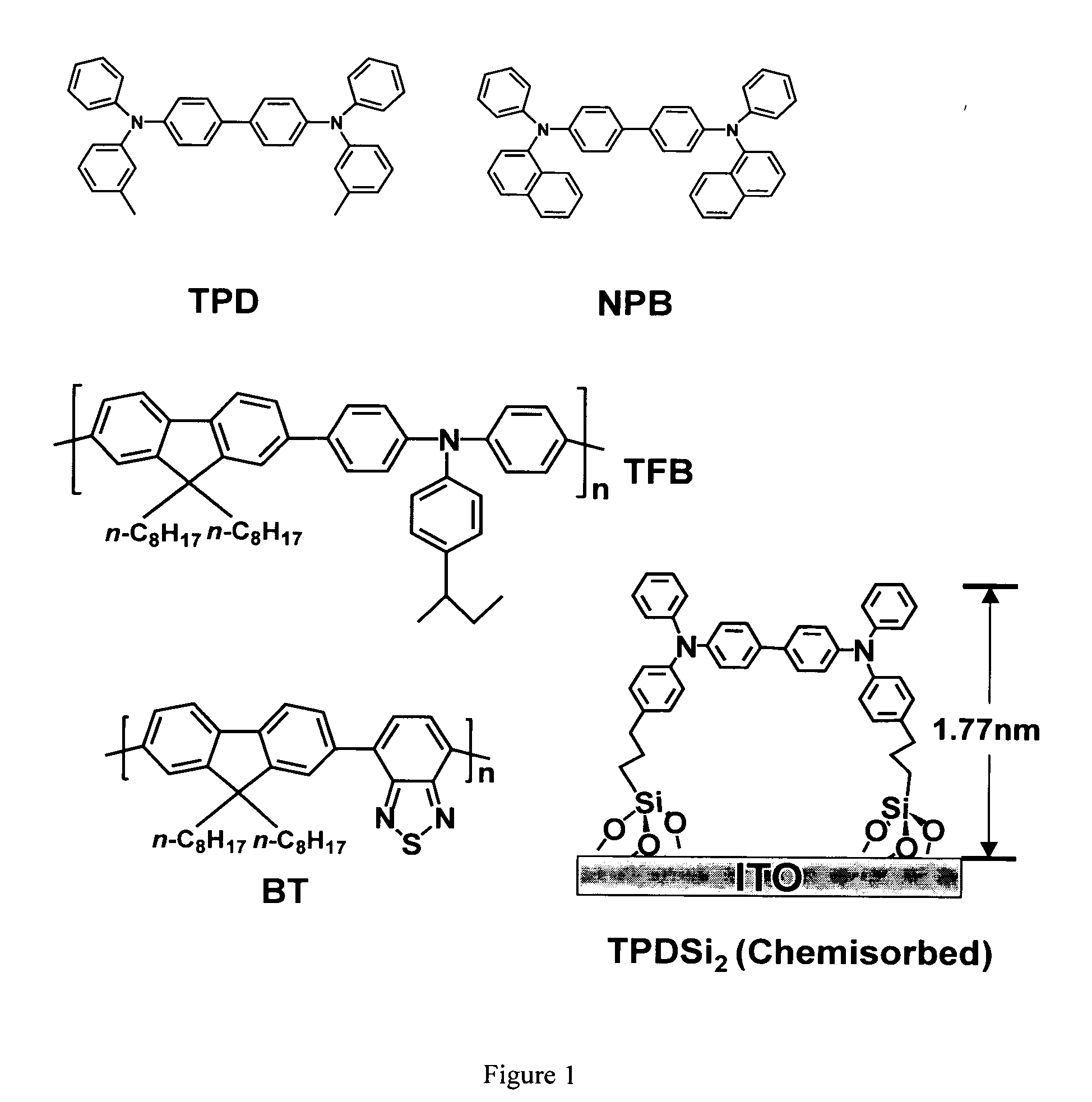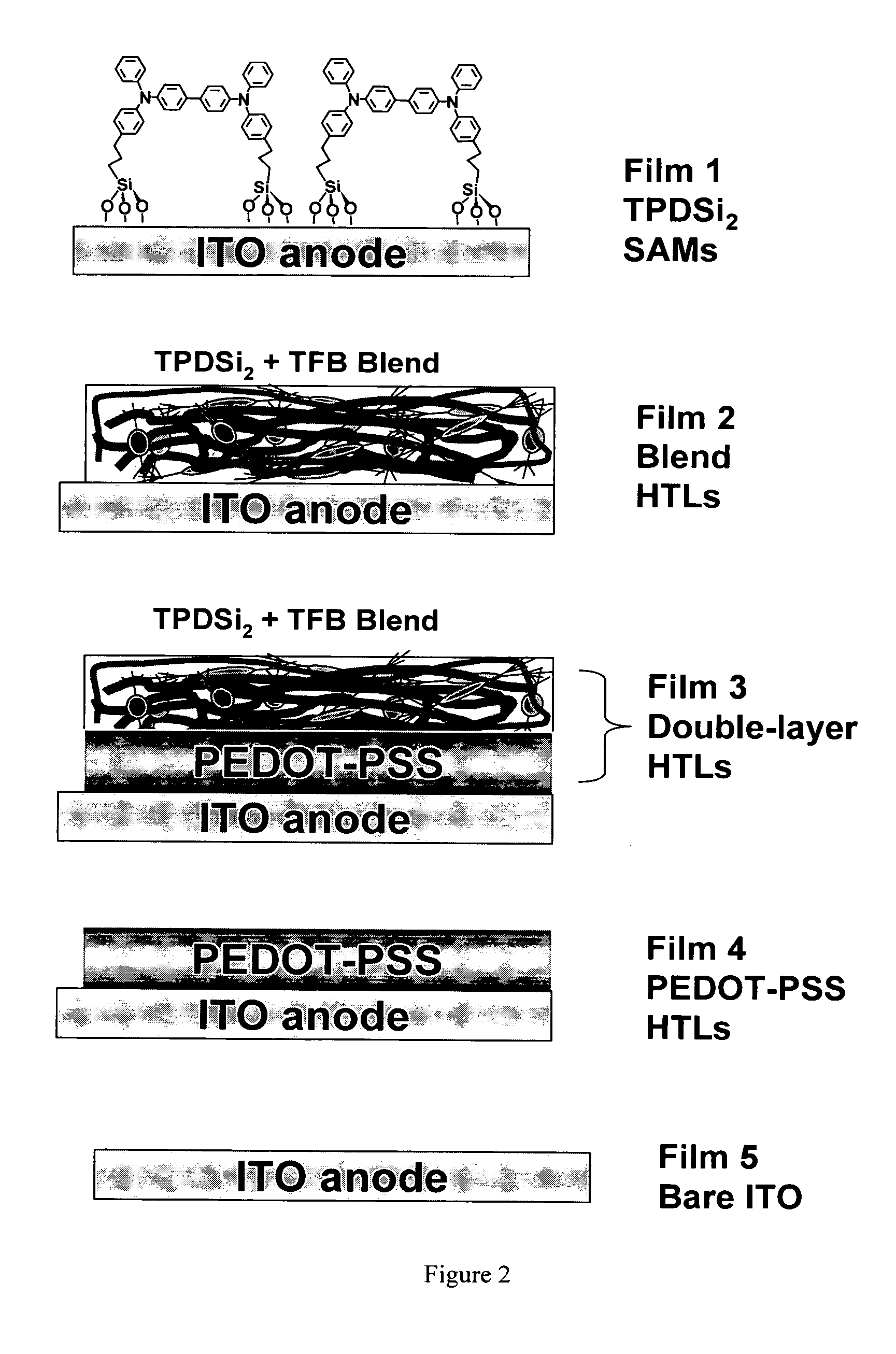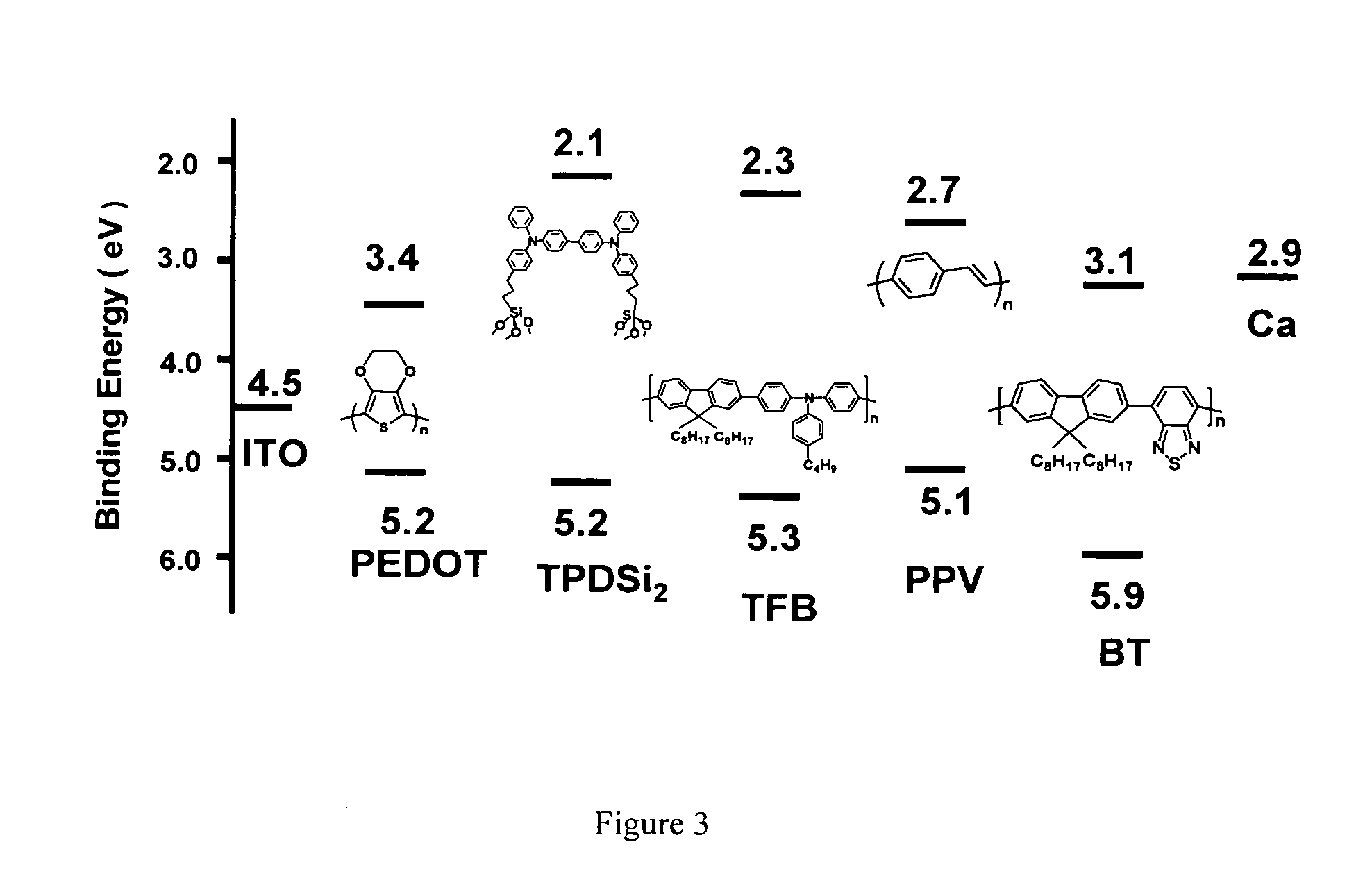Hole transport layer compositions and related diode devices
- Summary
- Abstract
- Description
- Claims
- Application Information
AI Technical Summary
Benefits of technology
Problems solved by technology
Method used
Image
Examples
example 1
[0049] Synthesis of Poly(9,9-dioctylfluorene-co-N-(4-(3-methylpropyl))diphenylamine) (TFB). TFB was synthesized from 2,7-bis(4,4,5,5-tetramethyl-1,3,2-dioxaborolan-2-yl)-9,9-dioctylfluorene and 4-(3-methylpropyl)-N,N-bis(4-bromophenyl)aniline using conventional Suzuki coupling methodology and procedures similar to those described in the literature. The reagents 2,7-bis(4,4,5,5-tetramethyl-1,3,2-dioxaborolan-2-yl)-9,9-dioctylfluorene and 4-(3-methylpropyl)-N,N-bis(4-bromophenyl)aniline were synthesized using procedures also described in literature. Experimental details are as follows.
[0050] To a mixture of purified 4-(3-methylpropyl)-N,N-bis(4-bromophenyl)aniline (0.459 g, 1.0 mmol) and 2,7-bis(4,4,5,5-tetramethyl-1,3,2-dioxaborolan-2-yl)-9,9-dioctylfluorene (0.642 g, 1.0 mmol) in 10 mL oxygen-free toluene under nitrogen was added 0.1 g (0.25 mmol) of the phase transfer catalyst “Aliquat 336” and 6 mL of 2 M aqueous Na2CO3 solution (the Na2CO3 solution was purged with N2 for 10 min ...
example 2
[0051] Synthesis of Poly(9, 9-dioctylfluorene-co-benzothiadiazole) (BT). BT was synthesized from 2,7-bis(4,4,5,5-tetramethyl- 1,3,2-dioxaborolan-2-yl)-9,9-dioctylfluorene and 4,7-dibromo-2,1,3-benzothiadiazole using conventional Suzuki coupling methodology and procedures similar to those described in the literature. The reagent 4,7-dibromo-2,1,3-benzothiadiazole was synthesized using a procedure also described in the literature. Experimental details are described as follows.
[0052] Under inert atmosphere, a 50 mL reaction flask was charged with 0.15 g (0.51 mmol) of purified 4, 7-dibromo-2, 1, 3-benzothiadiazole and 3 mL oxygen-free THF. Next, the 4, 7-dibromo-2, 1, 3-benzothiadiazole mixture was brought to ˜60° C. with stirring, at which point the benzothiadiazole dissolved. Bis(tetraethylammonium) carbonate (1.0 g 3.0 mol) in 2 mL de-ionized water was purged with N2 gas for 10 min and then added to the reaction flask, and the mixture was stirred under N2 for 10 min. Next, 2,7-bis(...
example 3
[0053] Fabrication procedure for TPDSi2 self-assembled monolayers (SAMs). Clean ITO substrates were first treated with an O2 plasma for 3 min and then transferred to a dry, clean Schlenk flask. Following strict Schlenk protocol, the Schlenk flask was further dried using a flame or a heatgun, followed by addition of a 1.0 mM dry toluene solution of TPDSi2 into the Schlenk flask by syringe. The ITO substrates were immersed in the TPDSi2 solution at ˜95° C. for 40 min, followed by rinsing and sonication with anhydrous toluene 3 times. The substrates were next immersed in a water / acetone mixture (1:100) with sonication for 5 min and then transferred to a 120° C. oven for 30 min. Silyl-derivatized TPD and TAA are prepared as described in the aforementioned applications, as well as in the literature. See, J. Cui, Q. Huang, J. G. C. Veinot, H. Yan, and T. J. Marks, Adv. Mater. 14, 565 (2002); and J. Cui, Q. Huang, Q. Wang, and T. J. Marks, Langmuir 17, 2051-2054. (2001).
PUM
| Property | Measurement | Unit |
|---|---|---|
| Transport properties | aaaaa | aaaaa |
| Bond | aaaaa | aaaaa |
Abstract
Description
Claims
Application Information
 Login to View More
Login to View More - R&D
- Intellectual Property
- Life Sciences
- Materials
- Tech Scout
- Unparalleled Data Quality
- Higher Quality Content
- 60% Fewer Hallucinations
Browse by: Latest US Patents, China's latest patents, Technical Efficacy Thesaurus, Application Domain, Technology Topic, Popular Technical Reports.
© 2025 PatSnap. All rights reserved.Legal|Privacy policy|Modern Slavery Act Transparency Statement|Sitemap|About US| Contact US: help@patsnap.com



